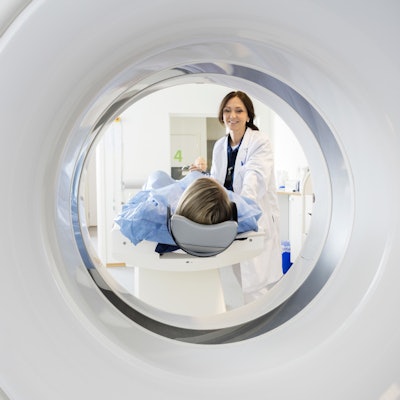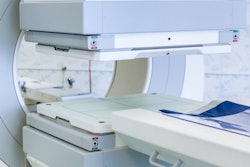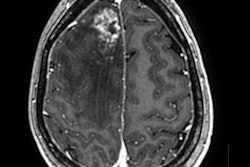
New York City researchers found that giving patients recommendations for when to schedule their outpatient imaging -- similar to how Netflix recommends what to watch next -- resulted in more appointments booked successfully via mobile app.
After upgrading the radiology portal on their institution's mobile app with an appointment recommendation engine for certain patients and types of imaging exams, a group led by Dr. Ankur Doshi of NYU Langone Health found that their "frictionless" approach significantly increased the percentage of patients scheduling their exams in the app, enhancing patient convenience and reducing scheduler staff requirements.
Doshi presented the group's experience with the new scheduling approach in a session at the recent annual meeting of the Society for Imaging Informatics in Medicine (SIIM).
Outpatient scheduling barriers
Outpatient radiology exams are important for diagnosis and monitoring of disease, screening, and follow-up of abnormal findings. However, the traditional scheduling model can present potential barriers, such as the need to identify an imaging center that performs the exam. In addition, it can be difficult to reach a scheduler during business hours and there can be complex phone trees as well as hold times, according to Doshi.
"Each of these are potential options for abandoning the scheduling process, and failure to perform necessary imaging can result in delayed diagnosis and adverse outcomes," he said.
In 2018, a radiology portal was launched within NYU Langone Health's mobile app. This portal included an option for patients to self-schedule most outpatient diagnostic imaging exams, such x-ray, ultrasound, mammography, CT, MRI, and PET/CT.
When NYU Langone receives an electronic imaging order, it sends out order notification text messages to patients. Initially, these were sent in two varieties: one for exams that were eligible for scheduling in the app and the second for exams that either couldn't be scheduled in the app or were for a patient who didn't have an active portal account.
However, only 17% of orders that received the "app-schedulable" text ultimately were actually scheduled in the app. Potential barriers in the way of a higher scheduling rate in the app included the number of steps and choices involved, calendar system navigation, and performance issues, Doshi said.
Frictionless scheduling
Other industries have shown that excess choices can make it difficult to choose a product and that algorithms that offer recommendations to users could help, according to Doshi. He also noted that a study by Netflix found that about 80% of what viewers watch comes from their list of personalized recommendations.
As a result, the NYU Langone team sought to implement what they call a "frictionless" scheduling approach that enables patients to quickly choose from three appointment options. To accomplish this, they first developed a recommendation engine, which was created after analyzing 24 months of past appointment data and six months of future appointment data, including radiology and clinical appointments.
The engine's recommendations are based on rules and priorities, including that the expected exam date must be less than 90 days in the future. Orders for multiple exams were excluded. A five-day buffer was also included for MRI and CT exams to allow time for insurance authorization for non-Medicare patients and for those who hadn't already received authorization, according to Doshi.
After the recommendation engine was developed and design updates were made to the mobile app, the NYU Langone group then produced a third variation of the imaging order notification text message that directed patients to the list of three recommended appointments. They could then confirm the appointment with just a few taps, Doshi said. The patients also have the option to use the traditional calendar-based method if they would prefer to manually search for other appointment options.
After adopting the "frictionless" scheduling approach, the researchers found that of the patients receiving text notifications that their imaging order was ready to be scheduled, 38% were the "frictionless" type, 40% were the type that could be scheduled traditionally in the app, and 22% requested that the patient call to schedule the exam.
| Impact of 'frictionless' mobile app on medical imaging scheduling | ||
| Traditional in-app scheduling based on time-slot availability in calendar | "Frictionless" scheduling with three recommended options | |
| Percentage of imaging studies scheduled in the app from imaging order notification text messages | 14% | 29% |
"Frictionless scheduling messages were associated with a greater rate of app scheduling," he said. "And this has also increased compared to our baseline rate of app scheduling, which was 17%."
On a modality basis, the frictionless scheduling approach was associated with a greater rate of app scheduling across all modalities, with MRI and ultrasound having the highest rates. In other findings, 39% of the appointments scheduled via the frictionless approach used one of the three recommended time slots, he said.
Doshi noted that one of NYU Langone Health's Manhattan call centers averages about 1,400 daily calls with an average call duration of approximately 3.5 minutes.
"If we assume that 10,000 appointments are scheduled on the app per month, which is a number that we did hit recently, that corresponds to 462 appointments per business day," he said. "This can save 27.2 scheduler hours per day."
Consequently, greater use of app scheduling can reduce scheduler staffing requirements, decreasing the need to hire more schedulers as imaging volume increases, Doshi said.
"And it also provides opportunities for schedulers to focus on other initiatives," he said.
Their new approach can also enhance patient convenience. A recent report found that 24% of self-scheduling activity occurred outside of normal business hours, he said.
In the future, the researchers would like to evaluate the performance of the recommendations in order to optimize the recommendation engine. They also want to assess the potential for machine-learning algorithms to generate the recommendations, he said. Furthermore, they would like to increase the cohort of patients that receive the text messages for the frictionless orders.



















